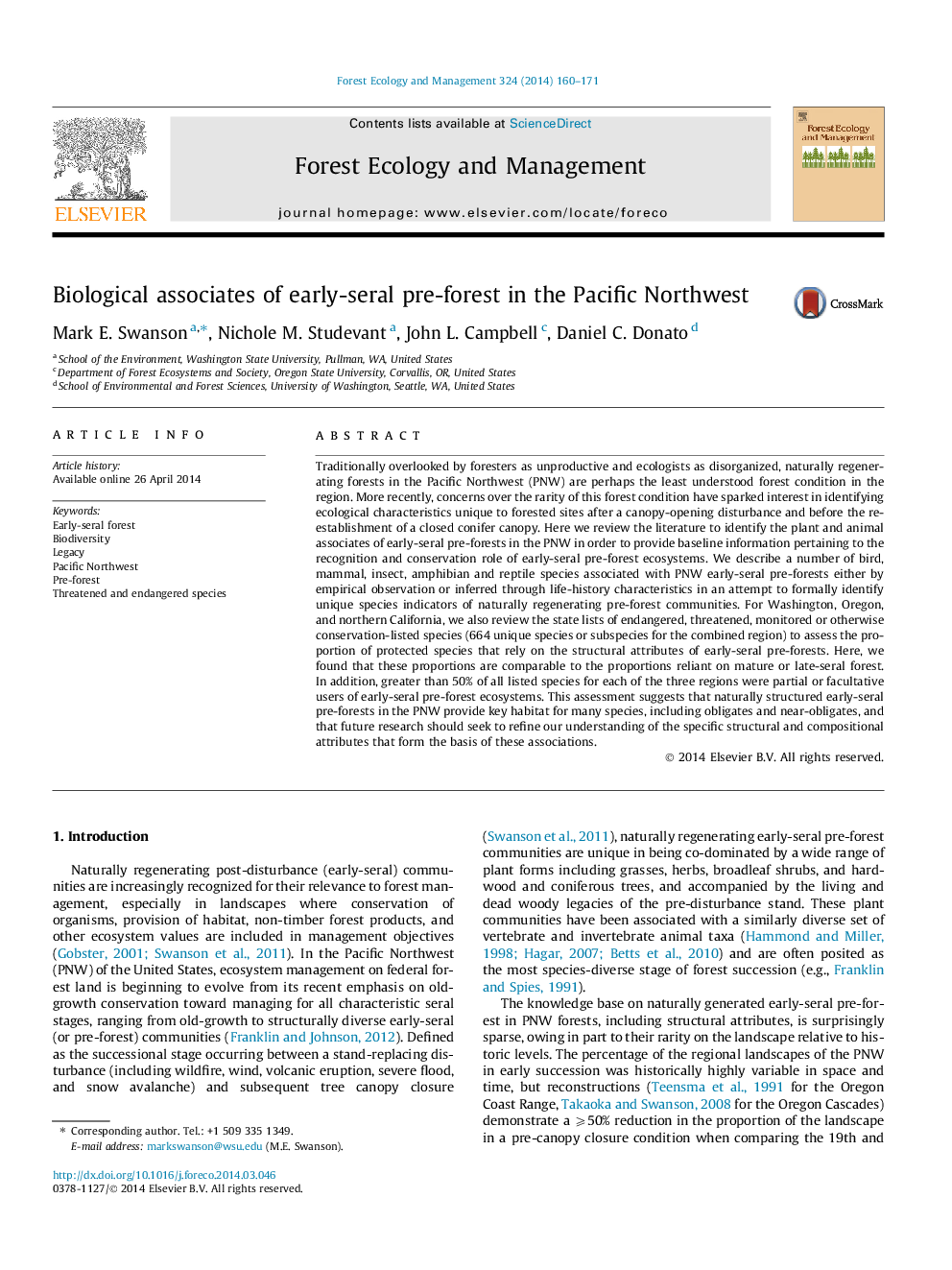| Article ID | Journal | Published Year | Pages | File Type |
|---|---|---|---|---|
| 86613 | Forest Ecology and Management | 2014 | 12 Pages |
•Snags/logs and diverse vegetation characterizes early seral pre-forest in the PNW.•A number of plant and animal species, some rare, reach peak abundance in this stage.•Early-seral forest supports a similar proportion of state-listed species as older forests.
Traditionally overlooked by foresters as unproductive and ecologists as disorganized, naturally regenerating forests in the Pacific Northwest (PNW) are perhaps the least understood forest condition in the region. More recently, concerns over the rarity of this forest condition have sparked interest in identifying ecological characteristics unique to forested sites after a canopy-opening disturbance and before the re-establishment of a closed conifer canopy. Here we review the literature to identify the plant and animal associates of early-seral pre-forests in the PNW in order to provide baseline information pertaining to the recognition and conservation role of early-seral pre-forest ecosystems. We describe a number of bird, mammal, insect, amphibian and reptile species associated with PNW early-seral pre-forests either by empirical observation or inferred through life-history characteristics in an attempt to formally identify unique species indicators of naturally regenerating pre-forest communities. For Washington, Oregon, and northern California, we also review the state lists of endangered, threatened, monitored or otherwise conservation-listed species (664 unique species or subspecies for the combined region) to assess the proportion of protected species that rely on the structural attributes of early-seral pre-forests. Here, we found that these proportions are comparable to the proportions reliant on mature or late-seral forest. In addition, greater than 50% of all listed species for each of the three regions were partial or facultative users of early-seral pre-forest ecosystems. This assessment suggests that naturally structured early-seral pre-forests in the PNW provide key habitat for many species, including obligates and near-obligates, and that future research should seek to refine our understanding of the specific structural and compositional attributes that form the basis of these associations.
